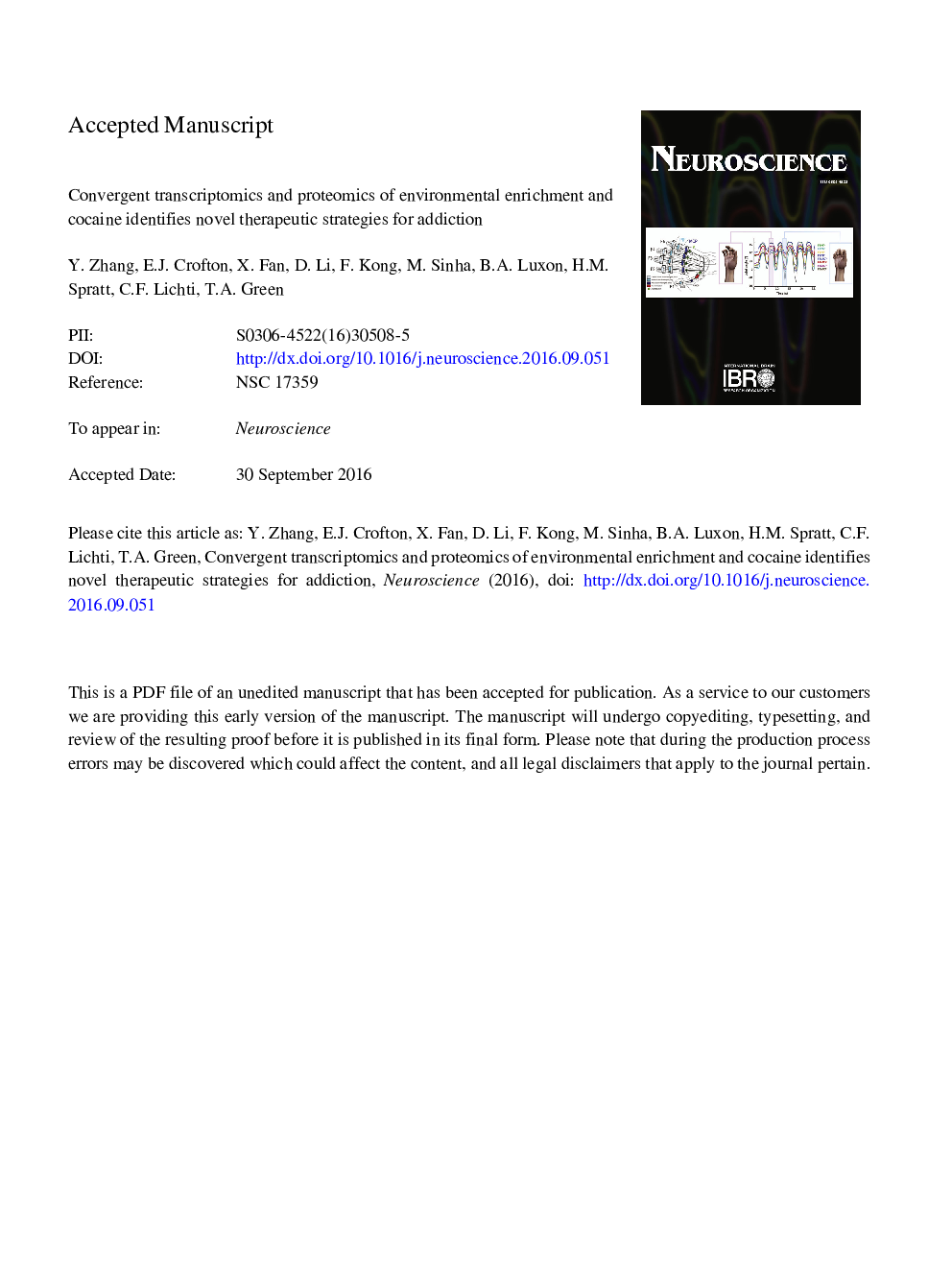| Article ID | Journal | Published Year | Pages | File Type |
|---|---|---|---|---|
| 6270645 | Neuroscience | 2016 | 29 Pages |
Abstract
Transcriptomic and proteomic approaches have separately proven effective at identifying novel mechanisms affecting addiction-related behavior; however, it is difficult to prioritize the many promising leads from each approach. A convergent secondary analysis of proteomic and transcriptomic results can glean additional information to help prioritize promising leads. The current study is a secondary analysis of the convergence of recently published separate transcriptomic and proteomic analyses of nucleus accumbens (NAc) tissue from rats subjected to environmental enrichment vs. isolation and cocaine self-administration vs. saline. Multiple bioinformatics approaches (e.g. Gene Ontology (GO) analysis, Ingenuity Pathway Analysis (IPA), and Gene Set Enrichment Analysis (GSEA)) were used to interrogate these rich data sets. Although there was little correspondence between mRNA vs. protein at the individual target level, good correspondence was found at the level of gene/protein sets, particularly for the environmental enrichment manipulation. These data identify gene sets where there is a positive relationship between changes in mRNA and protein (e.g. glycolysis, ATP synthesis, translation elongation factor activity, etc.) and gene sets where there is an inverse relationship (e.g. ribosomes, Rho GTPase signaling, protein ubiquitination, etc.). Overall environmental enrichment produced better correspondence than cocaine self-administration. The individual targets contributing to mRNA and protein effects were largely not overlapping. As a whole, these results confirm that robust transcriptomic and proteomic data sets can provide similar results at the gene/protein set level even when there is little correspondence at the individual target level and little overlap in the targets contributing to the effects.
Keywords
CREBTFTisolated conditionFR1VDRMAPTGSEAIPANFE2L2PSEN1YY1OCT1APPERKTBSGOBPATFNACnESMEF2enriched conditionMAPKEDTAEthylenediaminetetraacetic acidAddictionIngenuity Pathway AnalysisGene Set Enrichment AnalysisTris-buffered salineself-administrationRictorextracellular signal regulated kinaseEnvironmental enrichmentmyocyte enhancer factor 2activating transcription factor 6Transcriptomicsfixed ratio 1normalized enrichment scoreNucleus accumbensGene ontologyrapamycin-insensitive companion of mTORProteomicscAMP response element binding proteinmicrotubule-associated protein tauamyloid precursor proteinmitogen-activated protein kinaseCocaineVitamin D receptor
Related Topics
Life Sciences
Neuroscience
Neuroscience (General)
Authors
Yafang Zhang, Elizabeth J. Crofton, Xiuzhen Fan, Dingge Li, Fanping Kong, Mala Sinha, Bruce A. Luxon, Heidi M. Spratt, Cheryl F. Lichti, Thomas A. Green,
